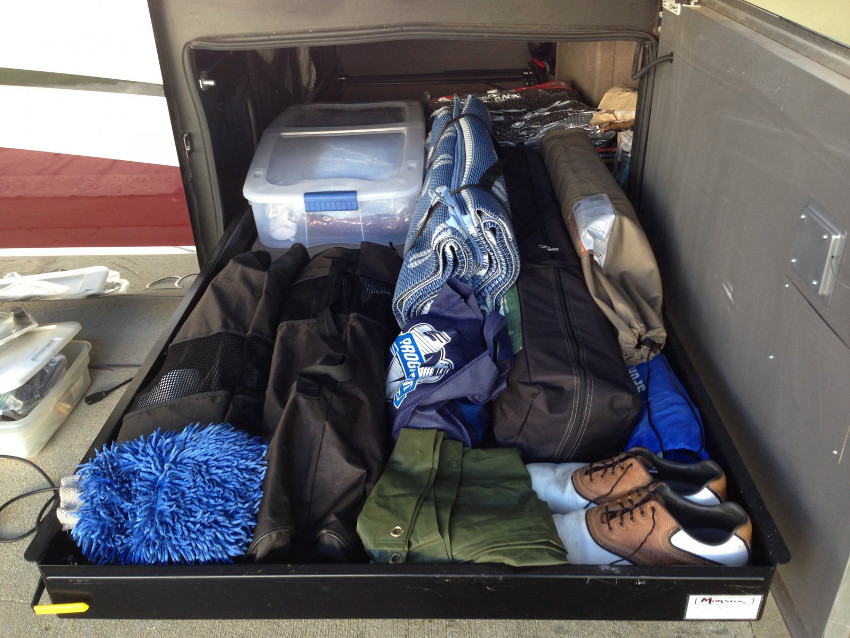Full-time RV packing takes practice and you probably won’t get it right the first time. That’s because as Americans, we’re used to filling our homes with more than we need. If you’re getting ready to hit the road, prepare to break some old habits now. For example, quit stocking up “just in case.”
Four Full-time RV Packing Ideas

It’s always a balance between just right and too much. Image: iRV2 Member DSL417
Mastering the art of full-time RV packing can be frustrating, but these tips make it easy:
Don’t drive an overweight RV.
Full-time RV packing starts with a thorough understanding of your RV’s weight. Get to a proper RV scale to learn about your RV’s cargo limitations. You’ll pay more than you would at a truck stop scale, but you’ll receive critical information like where your RV’s current weight is currently distributed and whether or not your RV can support all those extra cans of Spaghetti-Os.
Practice the “One in, One Out” rule.
Even the biggest RVs have limited space. Even if your RV has room to spare when you hit the road, it won’t for long. Keep your RV as spacious as the day you fell in love with it, by sticking to the “One in, one out” RV packing rule. This means that for every non-food item you buy, like clothing, an old one has to go. Getting rid of extra goods is as easy as finding one of the ubiquitous parking lot donation bins placed at shopping centers by charitable organizations.
Run out before you refill.
The one in, one out rule of RV packing extends to food items. Ignore those BOGO (Buy One, Get One Free) offers at the grocery store. Try to wait until your fridge is almost empty before replenishing your supply. About the only time, it’s smart to pack extra food is when you’re traveling into a remote boondocking area or staying in a small town with limited provisions.
Travel with critical supplies.

RV packing requires practice. Image: iRV2 Member DSL417
The full-timing lifestyle is full of opportunities for spontaneity. But if you’re unsure of your destination’s shopping situation, don’t go there without double-checking things like your propane supply and prescription drugs. Never travel without a backup of critical items.
We learned this lesson when we drove into Death Valley on a cold November Sunday. By 6 pm we ran out of propane because someone forgot to refill the tanks. That someone hasn’t forgotten since!
Hold only as much water as you need.
The million dollar question for many RVers is: How much water should you carry? The only way to find out is to follow RV packing rule number one: get your RV weighed with full water tanks. We did and discovered that full tanks put us at the outer limits of safe stopping power for our rig. Today we only travel with about one-third of a full water supply.
Travel with more than enough time.
The last rule of full-time RV packing centers around something that you can’t see or touch: time. Leave rush hour to the 9-to-5 minions and drive during the least crowded conditions. Allow enough travel time to get places without speeding or driving in darkness.
The fine art of full-time RV packing requires many hours of practice and patience. Luckily when you’re a full-time RVer you have plenty of opportunities to get it right.

My husband and I are planning to full time April 2019. Hopefully by then we will have our house empty and rented. Downsizing has been a real challenge, but we are almost there. After learning what we can live without I think it will be easier to “go lightly ” in our travels. We keep hearing how liberating it can be.
I’ve found that traveling with a partially full fresh water tank is not a good idea. If there is enough water, (liquid weight), to slosh around it can effect the handling of a moving trailer. If were boondocking we fill up a 5 gallon water jug and fill the fresh water tank when there is a fresh water supply at the campground. I don’t put any water in the blackwater tank when boondocking, we use the outhouse, I don’t want to haul a tank of black water back when I leave.